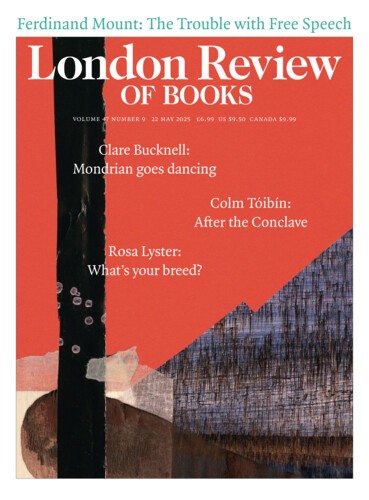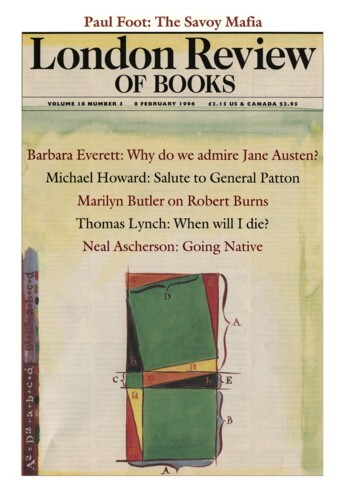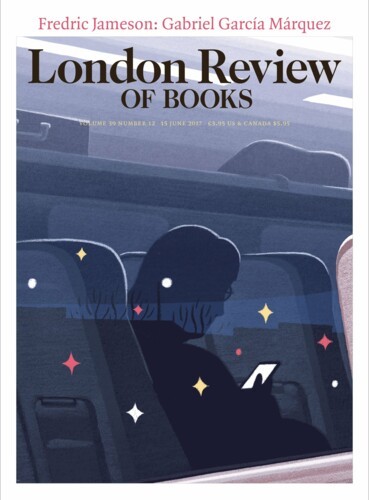‘The Janeites’ must be Kipling’s least popular story (though there is competition). Written in 1924 and published in Debits and Credits two years later, it is an abrupt, allusive yarn about a group of English officers and men in northern France near the end of the First World War; and it is narrated by one of them, a large working-class innocent called Humberstall, in peacetime a hairdresser. An alcoholic young lieutenant, Macklin, arrives in the battery and starts up a Jane Austen Society. Its effects embrace even the bewildered Humberstall – they save his life. The battery is wiped out by enemy action. Humberstall staggers shell-shocked away, muttering about Miss Bates, and finds the name acts like a password on a bookish senior nurse, who hauls him aboard a packed hospital train. Looking back years later, the still dazed narrator remembers his time as a Janeite as the happiest of his life.
This is a story rarely mentioned by critics, and when mentioned not much liked. The writer’s official biographer, Carrington, says levelly that it might as well have been called ‘The Trollopians’, and the editor of the recent Penguin Debits and Credits shows signs of agreeing. There is sense in their feeling. Moreover, ‘The Janeites’ is so full of ironies and ambiguities as to leave no reader quite lucid as to its merits. But the undoubted Kipling genius does glimmer somewhere in it; and depends on the unexpected light it casts on its subject. Kipling adored Jane Austen. And his story is, in its freakish, wilful, bitterly humorous way, almost a critical fiction, with something valuable to say about the novelist at its centre.
The story seems likely to have been sparked off by the first appearance of the Oxford edition of Jane Austen in 1923. It was in her review of it that Virginia Woolf referred to her distinguished predecessor as, of all writers, ‘the most difficult to catch in the act of greatness’: one even culpably reserved and reticent. Woolf is hardly a Humberstall. Yet Kipling’s character finds it hardest to grapple with Austen’s sheer smallness of scale, her apparent irrelevance to anything he thinks important. In its shrugging, elusive way the story seems to be finding its own answer to Woolf’s brilliant criticism.
That answer has some particular interest now, given that we appear to be in the middle of a second Janeite movement. And the second, quite as much as the first, raises the permanent question of what it is we admire the novelist for. The first Janeites (and it is unclear whether Kipling counted himself among them) were Edwardian connoisseurs, scholars and writers, some men of real distinction like A.C. Bradley. They protested against what struck them as a mean reductiveness of judgment in the academic image of Jane Austen. They admitted no faults. Their commitment they defined by stress on the human quality of their feeling: they loved the work as they loved the woman. Edwardian gentlemen acknowledging social facts of gender, they affiliated themselves to ‘Jane’: a name of course with regrettable tones of the domestic, even patronising.
Send Letters To:
The Editor
London Review of Books,
28 Little Russell Street
London, WC1A 2HN
letters@lrb.co.uk
Please include name, address, and a telephone number.



